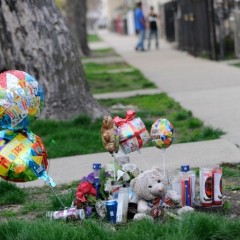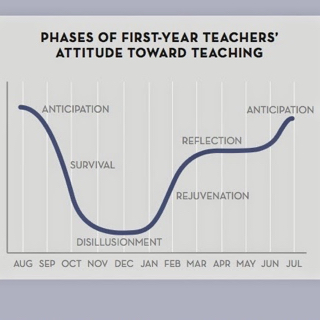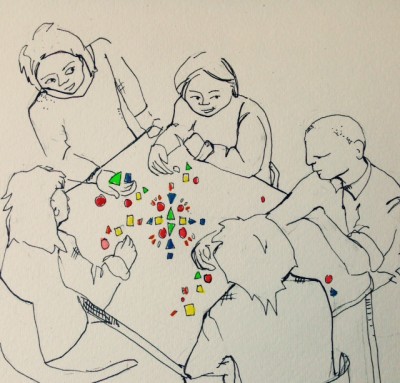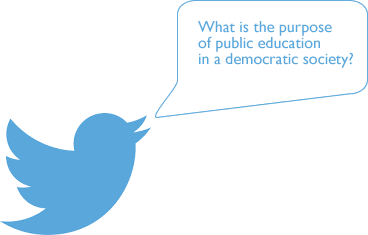Teaching in an urban, high poverty school isn’t like teaching elsewhere. The lack of resources, sporadic community support, systemic inequalities, and high mobility cultivates an environment filled with trauma. In this environment, it necessary to be in a constant state of alert. My kids are on guard. I’m on guard.
Tragedy is around every corner.
Literally. Every few months–it seems–there is an altercation that results in the death of a young man or a young woman. Usually a young man. A young man of color. It was Elijah yesterday.
Having taught in a suburban high school, I know this is not the same experience. Yes, there were deaths and sadness but there wasn’t an air of expectation. An air of resignation to the facts of life–that hardship, struggle, and sorrow are moments away. It’s an air of “we hope this never happens again” combined with a whiff of “we aren’t surprised anymore.”
Our students are constantly faced with loss and death, but are expected to be resilient and move on. They mourn in whatever way they can—through stories of precious moments, through over-sized T-shirts tagged “in loving memory” and through altars of remembrance. The district sends in extra grief counselors and we all pray the day hurries to a close so we can stop pretending to care about Shakespeare, transitive properties, and Government. Tomorrow will be better we tell ourselves. And it will.
But what about the days after the initial event? Who is there to help our students process this grief? How about the next tragic event? And the one after that? Five counselors, two psychologists, and a few administrators can not carry the psychological and emotional weight of 1400 students and 90 + staff members.
Education administration professor, Jeff Duncan-Andrade, argues that urban youth are undergoing “toxic stress”. He further postulates that,
When we look at national data sets for trauma, the numbers suggest that one in three urban youth display mild to severe symptoms of PTSD. They’re twice as likely as a soldier coming out of live combat to have PTSD. In the veterans’ administration, this is topic number one. But in conversations about urban youth, it almost never registers. All data shows symptoms of PTSD are interruptive to someone trying to perform well in school and more likely to create risk behavior, [yet] the investment is being made on incarceration.
In a classroom of 30, that is one third of my students. Where are the discussions on mental health, toxic stress, or urban PTSD on the local and national level? Are we waiting to see how the Compton Unified class action lawsuit against the district for failure to respond appropriately to student trauma pans out?
I have my suspicions why few want to address these issues.
Regardless, if our students are coming to school with more PTSD than a soldier, how are the staff in any building prepared to mitigate this? In 2012, the AFT published findings that 93% of teachers never received any bereavement training. The report elaborates that teachers are asking for it. Clearly, teachers want to be better prepared to serve all student needs not just ones related to Common Core. I think it’s just as important for Larry to know how to respond to his triggers as it is for him to read grade level texts.
Alas, when I browse through the catalogues of professional learning opportunities of surrounding districts, I notice I can sign up to learn how to set up a flipped classroom. I can get tips on how to use love and logic for my discipline plan. I can learn the ins and outs of the TPEP evaluation system. What I can’t find is anything on how to manage the grief my students bring with them to the classroom. I don’t see courses on mediating toxic stress for students or colleagues. I can’t seem to find a training on conflict resolution or tips for designing lessons that maintain academic rigour and give alternative activities to lower the affective filter. I can’t find a class to help me understand and respond to the differences between trauma and grief.
It is critical that schools with high percentages of students living with toxic stress receive more short and long term support addressing these conditions. Staff need more than momentary pep talks or a handout on the stages of grief. We need to acknowledge that it’s not enough to cry in the bathroom and then pretend things are fine and go back to teaching Things Fall Apart. We need to stop ignoring that our urban youth and their teachers have unique needs that aren’t being addressed system wide. We need professional learning opportunities that equip our teachers to handle grief—their own and a classroom full of it! If we develop sustainable programs truly addressing the whole child, then both our teachers and our students will be empowered to handle whatever is around the next corner.








